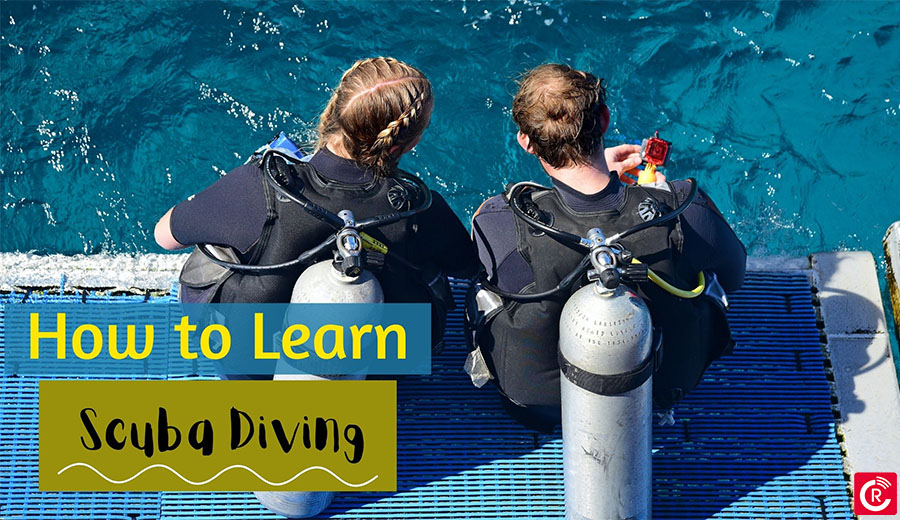
Scuba diving is a reasonably simple sport that takes just a short time of instruction to get started. Whether your aim in diving is fish viewing, ocean conservation, or simply meeting other adventurous people, the moment you learn to breathe underwater, 70% of the world becomes available to you!
Rules and knowledge required
When you dive responsibly and follow the laws and regulations, diving has a remarkable safety record. After all, that’s why they exist: to keep you fit, ready to dive again as soon as your surface time is through. Whether you’re just starting or have a lot of expertise, following these five safety procedures can lower your danger when diving.
Stay with Your Friend
Diving is a sport that should be done in a group. According to the dive fatality report, diving is a potentially life-saving activity for scuba divers. When properly applied, it aids in the prevention of accidents and the avoidance of negative consequences from potential events.
Diving instructor shares the dive plan, being acquainted with each other’s equipment, performing a pre-dive buddy check, keeping an eye on each other throughout the dive, adhering to the program, returning to the surface together, and having a post-dive debrief.” Statistics and research show that the buddy system decreases danger.
Pay Attention to Your Gauges
Your gauges, or dive computer, continually alert you of essential information like how deep you are, how long you’ve been down, how much air and no stop time you have left, which way is north, and so on. Check these regularly to verify you’re adhering to your dive strategy. Your air intake, in particular, might vary not just from day to day but also during the dive, depending on depth, current, exercise, stress, body temperature, and a variety of other factors.
Don’t assume that a particular fill will provide you with the same bottom time as a previous dive. Check your air levels frequently – every few minutes – and turn the descent, so you have at least 500 psi reserve when you surface.
Continue to Breathe
Breathing continuously when immersed protects your lungs from lung overexpansion damage. This is critical not just during the ascent but also during the dive. This not only reduces your danger if you’re climbing and don’t notice it for some reason (unusual, but it does happen), but it also helps you build and sustain the appropriate habit.
Perform a Safety Stop
When is a safety halt necessary? Divers should do a three- to five-minute safety stop at the end of each dive at a depth of 15 feet. Safety stop diving allows your body more time to expel excess nitrogen accumulated in your system throughout the dive. Deep technical dives often need deeper, and longer decompression breaks, although three to five minutes at 15 feet is routine for recreational dives within no-stop dive restrictions.
Keep Your Goal in Mind
The fundamental goal of every dive is for everyone to return safely. Do not let secondary objectives, such as photographing a particular species or viewing a specific portion of a wreck distract you from remembering your primary goal. Even if you “just need a minute” to achieve that “perfect shot,” if you’re nearing your turn pressure, forego the shot and turn the dive knowing you’ve accomplished the dive’s primary goal.
Simple Steps to begin learning Scuba diving
Determine Whether You have the desired Physical Requirements to Scuba Dive
People of all sizes and ages can learn to dive safely because of the diving equipment, medication, and instruction developments. Scuba diving is suitable for most persons who have a primary degree of physical fitness and ease in the water.
There are, however, a few medical issues that make scuba diving unsafe. Before enrolling in a scuba diving course, read the fitness for diving/dive medical questionnaire.
Selecting a Scuba Diving coach
While diving carries certain inherent dangers, these risks may be efficiently handled provided divers learn to properly examine and operate their equipment, as well as follow safe diving procedures. In addition, divers enjoy the underwater beauty safely by taking a range of scuba diving courses.
Most scuba diving establishments provide anything from “test dives” to open watercourses that certify a diver for whole life
Invest in or rent diving equipment
Scuba diving is a sport that necessitates the use of specific equipment. Therefore, a diver must have a complete set of well-maintained, correctly fitting scuba gear before diving. However, most scuba diving courses provide rental gear as part of the course price, so a diver does not need to purchase a whole set of equipment. In truth, many divers never buy a large quantity of equipment, preferring to rent or buy only personal things such as fins, wetsuits, and masks.
Of course, owning your diving equipment comes with many benefits. Divers who own diving equipment can be confident in their equipment’s fit, operation, and maintenance. As a result, they are frequently more at ease and confident underwater than people who do not.
Understand the Fundamentals of Scuba Diving
Descending into the underwater realm has unexpected ramifications. To be safe and ready to dive, one must first know how diving would affect their health and equipment.
Practice basic skills with an instructor
After reviewing dive theory with an instructor and getting scuba gear, you will be able to take your first breaths underwater—but you are not yet ready to jump off the boat! Learning to dive demands skills such as removing water from your scuba regulator and mask (your breathing apparatus).
A trained driving teacher will teach you these skills, as well as underwater communication and problem-solving.
Last but the most important one: Go Ahead and Ask!
Remember, no question is “dumb” or “stupid” when learning a new hobby. So go ahead, ask, learn and have the experience of your life.
Conclusion
Diving within your limitations is not the same as diving within your training since personal limits vary from day to day and year to year. For example, you may be qualified to dive to 100 feet, but diving that deep is probably not the greatest option if you haven’t dived in a few years.
Alternatively, if you’re not in your regular shape after not exercising for a few weeks, a challenging shore dive with your local club may be out of the question until you’re back in form. Finally, of course, you may continually strive to get back to your former limitations but recognize your changing bounds as life changes.





